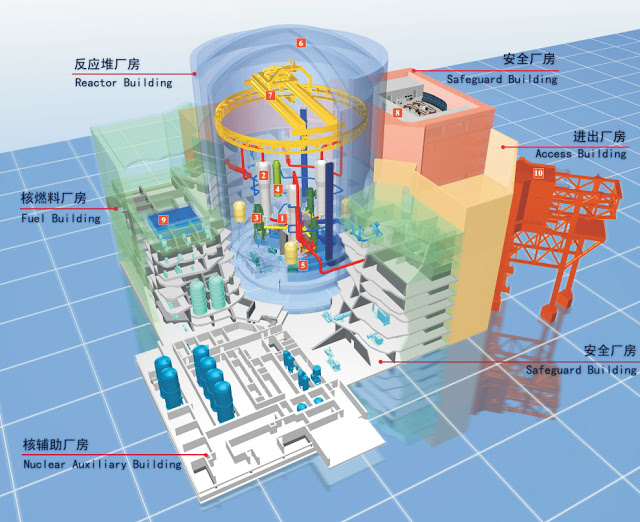CGN plans to use the Hualong One design for the fifth and sixth reactors at the Ningde plant in Fujian province, while CNNC plans to use the reactor in the first two reactors of a planned project in Zhejiang province, according to South China Morning Post.
CGN and CNNC jointly designed the Hualong One reactor. Construction of the first two Hualong One reactors began in May and December 2015 at the Fuqing plant. Site preparation for one Hualong One reactor is underway in Fangchenggang, with trial operation set for 2020.
Hualong One was developed by CGN and CNNC based on generation 3 technologies from foreign firms. CGN has upgraded French firm Areva’s 3G technology, while CNNC has made improvements on American firm Westinghouse’s 3G technology. Both have claimed intellectual property rights on the improvements. CGN and CNNC both came up with their own versions of 3G products in late 2011, but the National Energy Administration, which regulates the sector, ordered them to merge their designs into what is now known as Hualong One to pool resources and avoid direct competition in overseas markets.
Mao said the targeted construction cost of Hualong One was $2.5m per megawatt of installed capacity when production was scaled up. CGN vice-president Zheng Dongshan said the cost would be “competitive” in the global 3G reactor market.
CGN started site preparation for one Hualong One reactor in Fangchenggang, Guangxi, in December, with trial operation scheduled to start in 2020. CNNC began construction of two Hualong One reactors last year, one in May and the other in December. Both firms are also pursuing export opportunities. CGN is seeking to build Hualong One reactors in Britain, Thailand and Kenya, while CNNC is pursuing Hualong One projects in Pakistan and Argentina.
Meanwhile, CGN has loaded eight lead fuel assemblies of its own design at unit 1 of Phase II of the Ling Ao NPP (also known as Ling Ao 3) in Guangdong province, a statement said. The assemblies included four each of two different designs, both being loaded for the first time in a commercial reactor, CGN said. The four STEP-12 fuel assemblies and four CZ zirconium alloy tube assemblies were loaded into the reactor on 14 February.
The assemblies will now undergo irradiation tests to validate their performance. The loading of the assemblies is a breakthrough for CGN in nuclear technology self-reliance, the company said. Ling Ao 3 is a Chinese CPR-1000 pressurised water reactor which began commercial operation in September 2010.

Brian Wang is a Futurist Thought Leader and a popular Science blogger with 1 million readers per month. His blog Nextbigfuture.com is ranked #1 Science News Blog. It covers many disruptive technology and trends including Space, Robotics, Artificial Intelligence, Medicine, Anti-aging Biotechnology, and Nanotechnology.
Known for identifying cutting edge technologies, he is currently a Co-Founder of a startup and fundraiser for high potential early-stage companies. He is the Head of Research for Allocations for deep technology investments and an Angel Investor at Space Angels.
A frequent speaker at corporations, he has been a TEDx speaker, a Singularity University speaker and guest at numerous interviews for radio and podcasts. He is open to public speaking and advising engagements.






